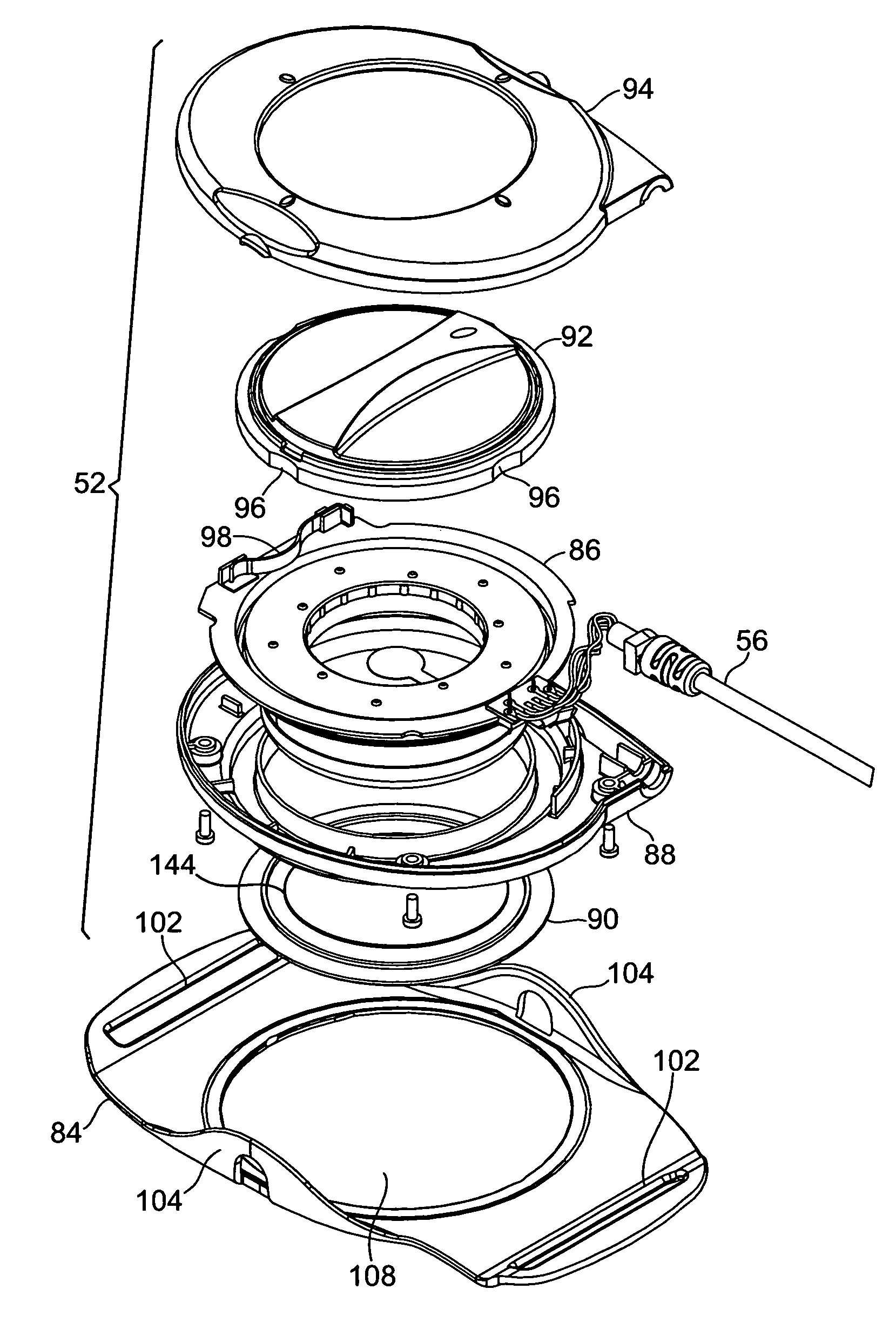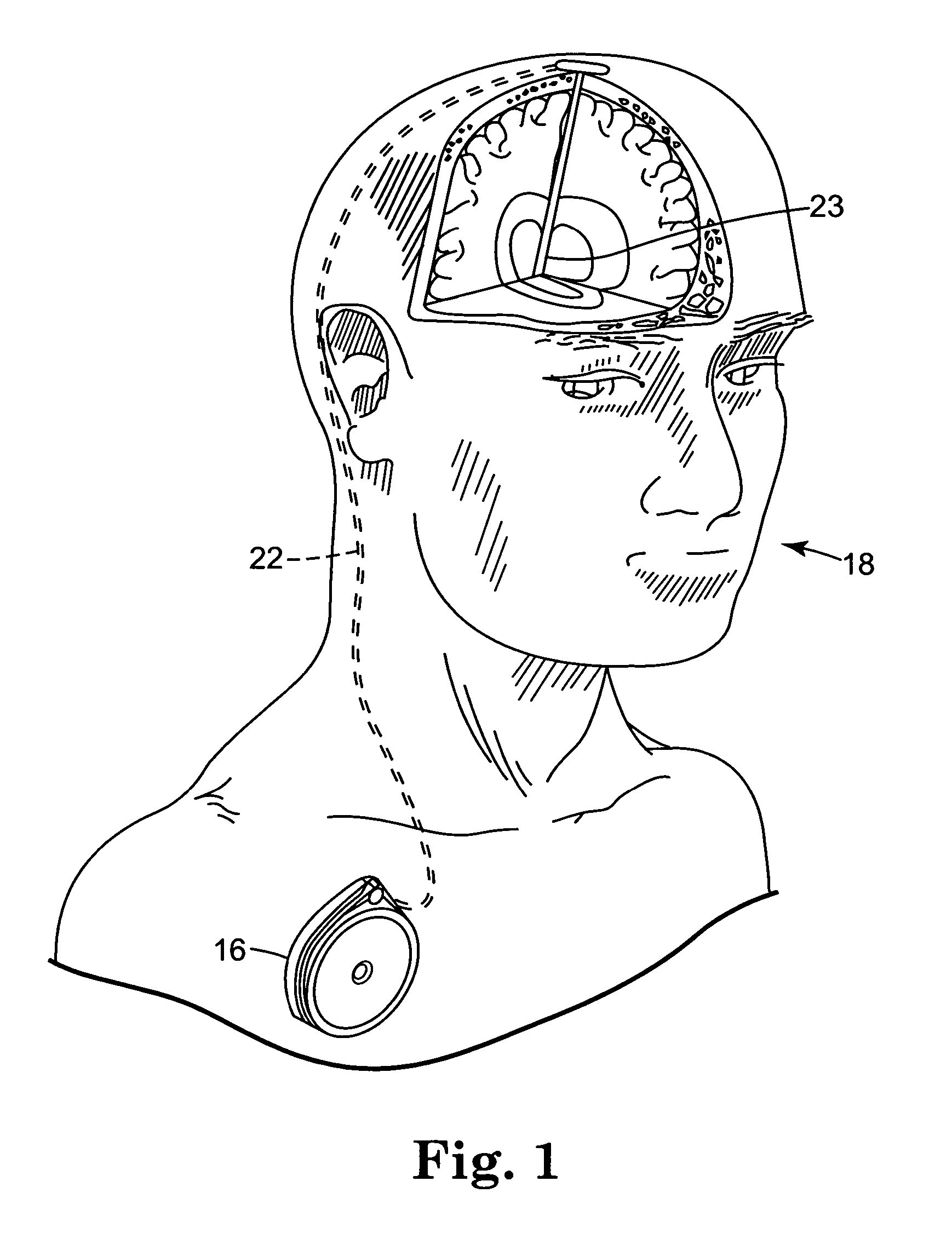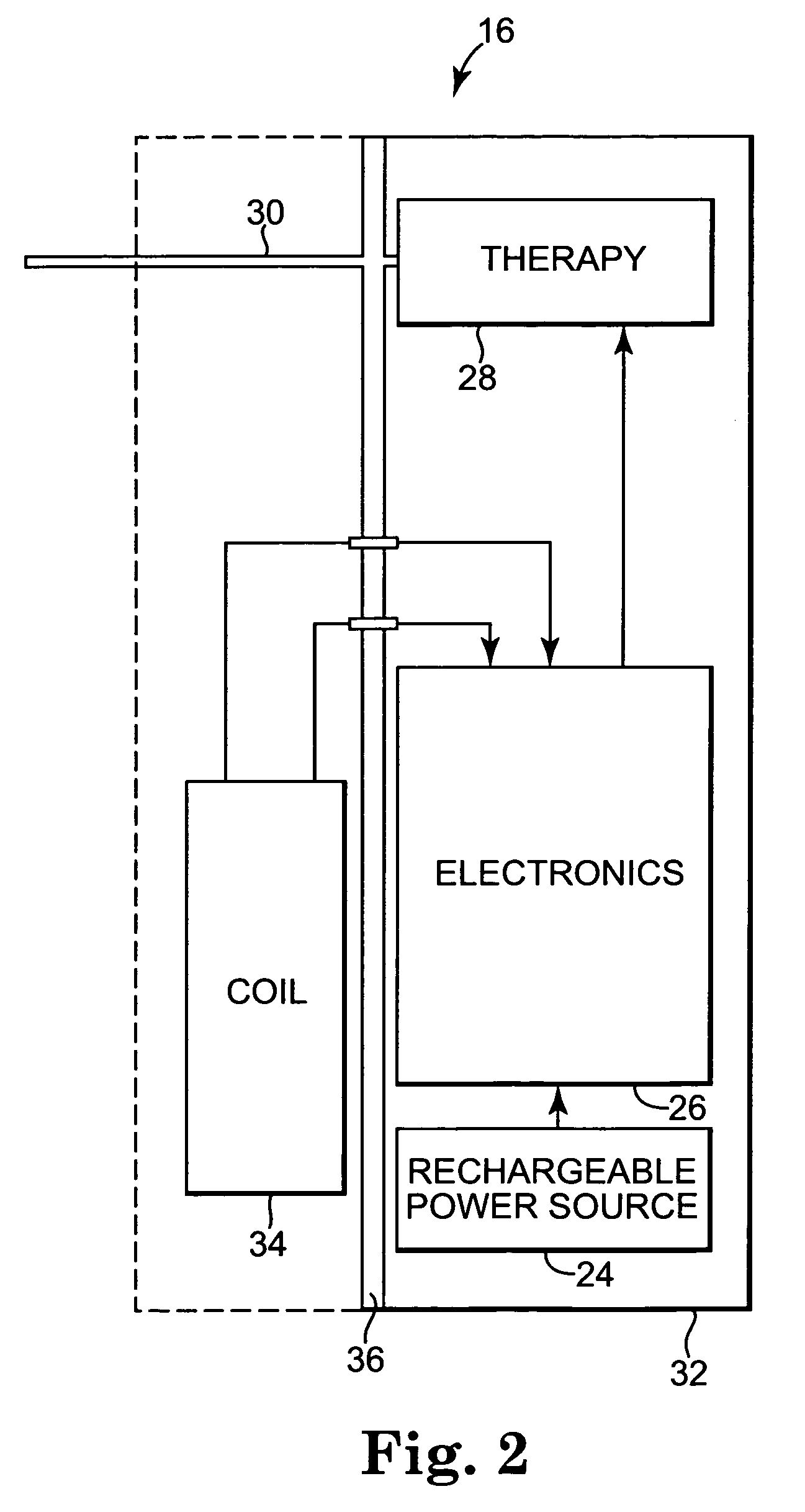Actively cooled external energy source, external charger, system of transcutaneous energy transfer, system of transcutaneous charging and method therefore
a technology of external energy source and active cooling, applied in the field of implantable medical devices, can solve the problems of inconvenience, disadvantage of electrical wires perforating the skin, and difficulty in limiting or reducing the temperature increase of patients, so as to reduce the risk of infection, shorten the charging time, and limit or reduce the temperature increase.
- Summary
- Abstract
- Description
- Claims
- Application Information
AI Technical Summary
Benefits of technology
Problems solved by technology
Method used
Image
Examples
Embodiment Construction
[0060]FIG. 1 shows implantable medical device 16, for example, a drug pump, implanted in patient 18. The implantable medical device 16 is typically implanted by a surgeon in a sterile surgical procedure performed under local, regional, or general anesthesia. Before implanting the medical device 16, a catheter 22 is typically implanted with the distal end position at a desired therapeutic delivery site 23 and the proximal end tunneled under the skin to the location where the medical device 16 is to be implanted. Implantable medical device 16 is generally implanted subcutaneously at depths, depending upon application and device 16, of from 1 centimeter (0.4 inches) to 2.5 centimeters (1 inch) where there is sufficient tissue to support the implanted system. Once medical device 16 is implanted into the patient 18, the incision can be sutured closed and medical device 16 can begin operation.
[0061]Implantable medical device 16 operates to infuse a therapeutic substance into patient 18. I...
PUM
 Login to View More
Login to View More Abstract
Description
Claims
Application Information
 Login to View More
Login to View More - R&D
- Intellectual Property
- Life Sciences
- Materials
- Tech Scout
- Unparalleled Data Quality
- Higher Quality Content
- 60% Fewer Hallucinations
Browse by: Latest US Patents, China's latest patents, Technical Efficacy Thesaurus, Application Domain, Technology Topic, Popular Technical Reports.
© 2025 PatSnap. All rights reserved.Legal|Privacy policy|Modern Slavery Act Transparency Statement|Sitemap|About US| Contact US: help@patsnap.com



